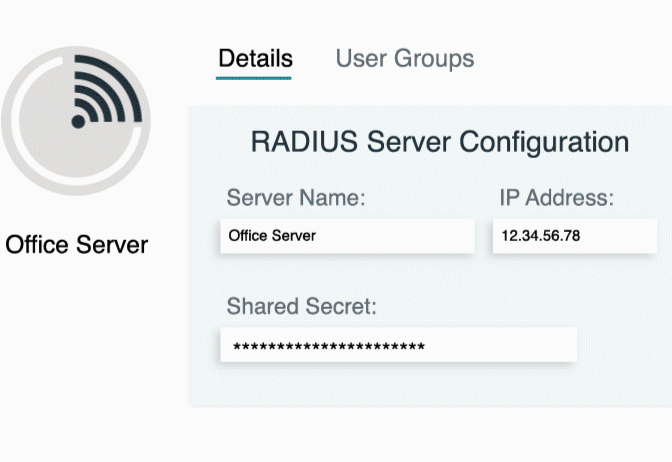Updated on September 12, 2025
Network performance problems can make even the most robust applications feel sluggish and unreliable. While most IT professionals focus on latency and bandwidth, one critical metric often gets overlooked: Packet Delay Variation (PDV).
PDV measures the inconsistency in packet arrival times within a data stream. When packets that should arrive at regular intervals instead show up with irregular gaps between them, you’re dealing with PDV. This variation—commonly called jitter—can severely impact real-time applications like VoIP calls, video conferences, and online gaming.
Understanding PDV becomes essential when you’re troubleshooting choppy audio calls, pixelated video streams, or unresponsive gaming experiences. This guide explains what causes PDV, how it affects your network applications, and what you can do to mitigate its impact.
Definition and Core Concepts
Packet Delay Variation (PDV) represents the difference in end-to-end delay between consecutive packets in a data stream. In simpler terms, it measures how much the arrival time of packets varies from what you’d expect in a perfect network.
Consider packets sent at perfectly regular 20-millisecond intervals. In an ideal network, they’d arrive at the destination with the same 20-millisecond spacing. PDV occurs when some packets arrive early while others arrive late, creating irregular gaps in the packet stream.
Jitter: The Common Term
PDV and jitter refer to the same phenomenon. Network engineers typically use “jitter” in everyday conversation, while “PDV” appears in technical documentation and RFC standards.
Core Network Concepts
Several fundamental concepts help explain how PDV works:
- Latency/Delay refers to the total time for a packet to travel from source to destination. PDV specifically measures the variation in this delay between consecutive packets.
- Packet Stream describes a series of packets forming a continuous flow of data, such as an ongoing VoIP call or video conference.
- Inter-Packet Arrival Time measures the time interval between the arrival of one packet and the next. PDV directly affects this timing.
- Real-time Applications depend heavily on consistent timing. VoIP, video conferencing, and online gaming all suffer when PDV increases.
- Network Congestion creates one of the primary causes of PDV by forcing packets to wait in queues for varying amounts of time.
- Queuing Delay represents the variable time packets spend waiting in network device buffers. This creates the most significant contributor to PDV.
- Network Path Asymmetry occurs when packets from the same stream take different routes through the network, each with different delay characteristics.
- Jitter Buffer provides the primary mechanism receivers use to compensate for PDV by temporarily storing packets before playing them out.
How It Works
Understanding PDV requires examining both what causes it and how it affects network applications.
Packet Transmission Variability
Several network conditions create PDV:
- Network Congestion forces packets to encounter varying levels of traffic as they traverse routers and switches. During high-traffic periods, packets experience longer processing and queuing delays. When traffic lightens, subsequent packets move through more quickly, creating the timing variations that define PDV.
- Route Changes happen when dynamic routing protocols direct packets from the same stream along different network paths. Each path has unique latency characteristics based on the number of hops, link speeds, and congestion levels. This path diversity directly contributes to PDV.
- Queuing Delays occur when packets wait in network device buffers before transmission. The time spent waiting varies based on queue depth and processing priorities. Some packets move through empty queues immediately, while others wait behind multiple queued packets.
- Imprecise Packet Scheduling results from network devices that don’t transmit packets at perfectly regular intervals. Processing overhead and competing traffic create small timing variations that accumulate across multiple network hops.
- Processing Delays vary based on the computational load at intermediate network nodes. Routers and switches experiencing high CPU utilization take longer to process packets, while the same devices process packets more quickly during low-utilization periods.
Impact on Packet Arrival
These variable delays transform regular packet streams into irregular ones. Packets sent at consistent intervals arrive with unpredictable gaps between them. Some packets arrive ahead of schedule, while others arrive significantly delayed.
This irregularity creates problems for applications expecting consistent data flow. The receiver must somehow accommodate packets that arrive too early or too late compared to the expected timing.
Degradation of Real-time Applications
PDV particularly affects applications sensitive to timing consistency:
- Voice over IP (VoIP) suffers when high PDV causes jitter buffers to run empty or overflow. Users experience choppy audio, missing words, echo effects, and complete call dropouts. The human ear easily detects these irregularities, making even small amounts of PDV noticeable during voice calls.
- Video Conferencing and Streaming applications show PDV effects through pixelation, screen freezing, and audio-video synchronization problems. Video frames arriving out of sequence create visual artifacts, while audio packets arriving irregularly cause speech to sound robotic or choppy.
- Online Gaming becomes nearly unplayable with high PDV. Player actions don’t register consistently, creating the “lag” that gamers complain about. Game state updates arrive irregularly, making responsive gameplay impossible.
Jitter Buffer Operation
Jitter buffers provide the primary mechanism for mitigating PDV at the receiver:
- Purpose: These temporary buffers reorder packets and smooth out delay variations before delivering data to the application.
- Mechanism: Incoming packets get held in the buffer for a fixed period before playout. This delay absorbs timing variations by ensuring packets play out at regular intervals regardless of their irregular arrival times.
- Trade-offs: Jitter buffers introduce additional fixed latency to all traffic. Packets arriving too late—beyond the buffer’s capacity—get discarded, creating packet loss. Buffer sizing becomes critical: too small and late packets get dropped; too large and overall latency increases unnecessarily.
Key Features and Characteristics
PDV exhibits several important characteristics that affect how you monitor and manage it:
- Measure of Inconsistency: PDV quantifies timing irregularity rather than absolute delay. A connection might have high latency but low PDV if delays remain consistent.
- Primary Impact on Real-time Communications: While data transfers can tolerate some PDV, real-time applications suffer immediate quality degradation.
- Network Performance Indicator: PDV serves as a crucial metric for assessing Quality of Service (QoS) effectiveness and identifying network problems.
- Measured in Milliseconds: Network monitoring tools typically report PDV in milliseconds, with values under 30ms generally acceptable for VoIP applications.
- Cumulative Effect: PDV accumulates across each network hop. Long network paths with many intermediate devices typically exhibit higher PDV than shorter, more direct routes.
Use Cases and Applications
Understanding and controlling PDV becomes essential in several scenarios:
- VoIP and Unified Communications Systems require PDV monitoring for maintaining call quality. Network administrators use PDV measurements to identify problematic network segments and validate QoS implementations.
- Online Gaming Services monitor PDV to ensure responsive gameplay. Game servers and network infrastructure must maintain low PDV to provide competitive gaming experiences.
- Live Streaming and Broadcast applications depend on consistent packet delivery to maintain smooth video playback. Content delivery networks monitor PDV across their infrastructure to ensure quality streaming experiences.
- Industrial Control Systems and Operational Technology rely on timely, consistent delivery of control signals. High PDV can disrupt automated processes and create safety concerns in industrial environments.
- Network Monitoring and QoS Implementation uses PDV as a key performance indicator. Network teams monitor PDV trends to identify congestion problems and validate traffic prioritization policies.
- Service Level Agreement (SLA) Compliance often includes PDV thresholds. Service providers must monitor and report PDV metrics to demonstrate they’re meeting contractual performance guarantees.
Advantages and Trade-offs
Understanding PDV provides several benefits for network management:
- Improved User Experience: Monitoring and controlling PDV directly improves the quality of real-time applications. Users experience clearer voice calls, smoother video conferences, and more responsive gaming.
- Enhanced Service Quality: Organizations can meet QoS requirements for critical services by actively managing PDV through traffic prioritization and network optimization.
- Reliable Communication: Consistent data flow ensures time-sensitive applications perform predictably, reducing user complaints and support tickets.
- Better Network Planning: PDV measurements inform capacity planning decisions and help identify where network upgrades will provide the most benefit.
However, PDV mitigation techniques involve trade-offs:
- Introduces Fixed Delay: Jitter buffers add latency to all traffic while smoothing out timing variations. This additional delay can impact application responsiveness.
- Packet Discard: When packets arrive too late for jitter buffer accommodation, they get dropped, creating packet loss that affects application quality.
- Resource Consumption: Jitter buffers require memory on receiving devices. Large buffers for handling significant PDV can strain device resources.
- Network Hardware Requirements: Implementing advanced QoS features to reduce PDV often requires capable routers and switches, increasing infrastructure costs.
- Not Always Eliminable: Some level of PDV is inherent in packet-switched networks. The goal typically involves reducing PDV to acceptable levels rather than eliminating it completely.
Key Terms Appendix
- Packet Delay Variation (PDV): The difference in end-to-end delay between consecutive packets in a data stream; also known as jitter.
- Jitter: The common term for Packet Delay Variation.
- Latency (Delay): The total time for a packet to travel from source to destination.
- Network Congestion: A state where data traffic exceeds available network bandwidth.
- Queuing Delay: The time data packets spend waiting in a network device’s buffer.
- Inter-Packet Arrival Time: The time interval between the arrival of consecutive packets.
- Jitter Buffer: A temporary buffer at the receiver to compensate for packet delay variation.
- Real-time Applications: Applications highly sensitive to time consistency, such as VoIP and video conferencing.
- VoIP (Voice over IP): Voice communication over an IP network.
- Quality of Service (QoS): Mechanisms to provide different priority to different applications or data flows.
- Packet Loss: When a packet fails to reach its destination.
- TCP (Transmission Control Protocol): A connection-oriented, reliable transport protocol.
- UDP (User Datagram Protocol): A connectionless, unreliable transport protocol, often used for real-time applications sensitive to delay variations.
- SLA (Service Level Agreement): A contract specifying performance levels, often including PDV limits.





